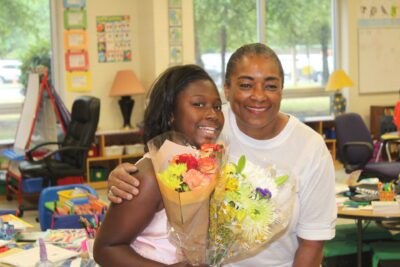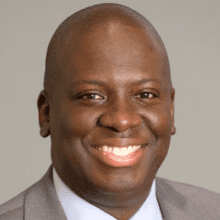
|
|
An article in The Charlotte Observer about diversity, equity, and inclusion (DEI) in corporate America got me thinking about the impact of DEI in K-12 education.
Most Fortune 500 companies in the Charlotte area — including seven out of nine of the largest publicly traded companies — have reduced or eliminated their focus on DEI in reports to the Securities and Exchange Commission, according to the article. Additionally, references to DEI-related programs and goals have been removed altogether.
The changes come in the wake of President Trump’s DEI executive order signed Jan. 21, which ended what it called DEI “discrimination in the federal workforce, and in federal contracting and spending.” In North Carolina, the legislature is considering a bill to eliminate DEI in public education.
As corporate America shifts away from emphasizing DEI, schools and teachers must stay focused on what truly benefits students — regardless of the terminology.
Effective practice is effective practice. Period.
Recently, I was part of a discussion with an elementary school principal who worried about the fate of their school’s Equity Committee. The committee later changed its name, the principal revealed in a follow-up conversation. A middle school principal shared with me he was told to remove photos of Frederick Douglass and John Lewis from his office. I worry the current climate of uncertainty will result in a frenzy of pre-emptive decisions that undermine the inclusive and supportive environments schools strive to create.
As a former teacher, creating a student-centered environment is less about what label we put on something but rather implementing effective practices that generate a positive return on our investment. While I understand the current environment, I encourage educators to focus less on labels and more time on strategies that will truly make a difference for students.
The current state of affairs in public education is not completely new. The U.S. Supreme Court has been telling us for some time now that we can pursue diversity through race-neutral means without running afoul of the constitution. With that in mind, let’s look at the work through some critical questions educators must ask themselves:
- How do you ensure that every student feels seen, heard, and supported in your classroom? I remember visiting a mosque several years ago and talking with students about their experiences in school. One student shared a story about a classroom celebration rewarding students for their excellent work on a project. Because she is Muslim, she doesn’t eat pork. When she informed her teacher, the teacher advised her to simply remove the pepperoni from the pizza. This moment left her feeling unheard and excluded.
- In what ways do you adjust your teaching practices to meet the different learning needs and experiences of your students? Effective teachers constantly modify content and the learning environment based on students’ readiness levels and interests. I visited several schools recently where I observed teachers grouping students strategically or adjusting the assignment to help different types of learners engage with the material. Are you tailoring instruction and support to meet all students where they are?
- How do you create space in your classroom where students from all backgrounds can thrive academically and emotionally? This is not exclusively about race or ethnicity, but also the geographic region where students reside, hobbies, personality traits, favorite subjects, family traditions, and favorite foods. How can you allow students to explore topics that interest them within the same broader learning goal? We want all students to grow regardless of their background.
- How do you encourage students to value perspectives and experiences different from their own? I’ve been fortunate to serve as a chaperone with different student groups on trips to our nation’s capital. Each time, students visited various museums: the Natural Museum of American History, U.S. Holocaust Memorial Museum, National Museum of Natural History, National Museum of American History, and National Museum of African American History and Culture. We must create learning experiences that encourage students to broaden their understanding of the world around them.
- How do you ensure your expectations are equitable for all students, regardless of their background or prior experiences? I was talking with a friend who is a high school administrator about the dress code. I’ve known this for some time — my high school daughter reminds me frequently — that there are issues with the dress code in most schools. As the administrator told me, “I’d venture to say it goes beyond that even — intentional hiring, school culture … or other policies that target one group over another … it’s everywhere, and as administrators, we have the power to influence how things are done at our schools. It’s our job to recognize practices and policies that are common practice but may or may not be what’s good for all people.”
After this last conversation, I reflected on why educators must root out those practices that harm some students while ensuring every student has access to what they need to succeed. The above questions are not about DEI. Instead, they focus on — as they should — practices that are best for every student, every day, for a better tomorrow.
This brings me to my last point. I’m a big proponent of every student having a caring and supportive adult at school. This is particularly important as schools continue to grapple with mental health challenges students face after the COVID-19 pandemic. Another best practice is to ensure we build appropriate relationships with students that help them successfully navigate school.
That’s what countless teachers have done for me. Take Mr. Morgan, for instance. At Wicker Park Elementary School (now A.N. Pritzker School) in Chicago, my best friend, Corey, and I begged Mr. Morgan to play basketball with us after school on the playground. We asked every chance we got, so much so that I thought he became numb to our request. He would eventually surprise us. One day, Mr. Morgan trotted onto the concrete court, donning his trench coat and three-piece suit. He was ready. This skinny, afro-wearing kid with decent basketball skills and his best friend underestimated their teacher, who towered over us. I don’t remember the final score, but it wasn’t important.
That simple game of basketball stayed with me because it made me feel valued. Effective teaching goes beyond the classroom. It’s about creating moments where students feel respected, heard and cared for.
Basketball was never the end goal. It was a tool for something greater. The most effective teachers use many tools: showing up at extracurricular events, celebrating student successes, offering extra help, amplifying student voices, and creating safe, welcoming spaces.
In the end, it’s not about the labels we give our work. It’s about the lives we change. When we build genuine connections and create environments where every student feels valued, we do more than teach. We empower and inspire. We make a difference that lasts far beyond the classroom.
Recommended reading


